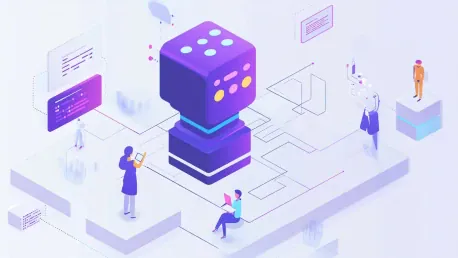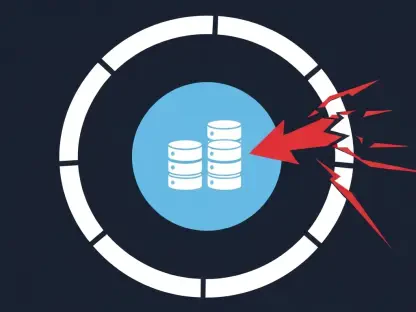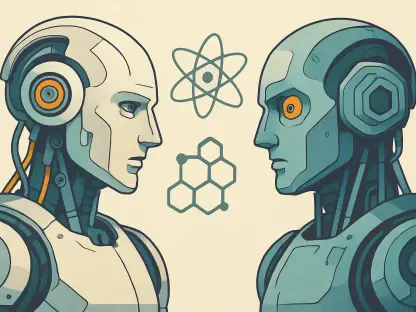Artificial Intelligence (AI) and Large Language Models (LLMs) have had profound effects on systems programming, reshaping both the methods and philosophies of software engineering. Kris van Rens delves into this evolving landscape, emphasizing the dual aspects of AI’s impact: the potential to enhance efficiency juxtaposed against the inherent challenges and potential drawbacks. This exploration examines the tangible benefits and the accompanying limitations of leveraging AI and LLMs within coding and developer workflows.
Utility and Challenges of LLMs in Code Generation
The processes of code generation, completion, refactoring, documenting, and review have been notably enhanced by AI and LLMs, making significant strides particularly for learners and developers working with existing code. The initial excitement surrounding the inclusion of AI in these tasks highlights substantial time savings and educational advantages that have become increasingly evident. By automating repetitive and intricate coding tasks, LLMs offer developers new avenues to work smarter, not harder.
However, this integration is not without its issues. Kris shares firsthand experiences that reveal mixed results when using AI for production-grade tasks. One primary challenge lies in crafting precise and effective prompts that completely align with specific requirements. Sometimes, the effort of phrasing these prompts accurately can surpass the time and energy required for manual coding. Furthermore, the propensity of LLMs to confidently produce incorrect or invalid code adds a layer of complexity, underscoring the necessity for developers to possess a deep understanding of the generated code and to conduct thorough reviews of AI contributions rather than relying on them uncritically.
Abstraction in Software Development
The future of software development seems poised for higher levels of abstraction, driven by the advances in AI. As generative AI gains traction, the manual task of writing code could eventually diminish, making way for design and strategic planning to take center stage. This envisioned transition could dramatically transform how developers approach software creation by delegating more routine coding tasks to AI while focusing on high-level design and architecture.
Despite the promising outlook, there is a skeptical tone regarding the reliability of AI-generated code without extensive testing. The vision of an AI-centric development future must be underpinned by rigorous verification methodologies to ensure robustness and reliability. Before these technologies are fully integrated into mainstream production environments, developers will need to devise and adhere to robust testing frameworks. This skepticism is a prudent reminder that while technology can push boundaries, human oversight and verification remain irreplaceable components of the software development process.
Practical Applications and Limitations in Development Environments
Within practical development settings, LLMs have shown considerable skill in enhancing in-line code completion within Integrated Development Environments (IDEs). This feature can potentially result in significant efficiency gains for developers by predicting and completing lines of code based on context. Nevertheless, Kris points out instances where these auto-completions may diverge from the coder’s original intent, leading at times to frustration and misalignment.
Focusing on embedded development reveals deeper inconsistencies, such as inaccurate assumptions about hardware components like general-purpose IO (GPIO) pin numbers. These challenges illustrate the limitations of relying too heavily on AI for context-specific development work. Developers must remain vigilant and incorporate checks and balances to ensure that automatically generated code matches the unique constraints and requirements of their projects. This duality of practical application and inherent limitation frames the ongoing conversation about AI’s role in software development environments.
Enhancing Compiler Feedback and Sustaining Legacy Code
LLMs show significant promise when tackling the often cumbersome task of interpreting complex compiler feedback, particularly for languages like C++. Known for its dense and sometimes impenetrable error messages, C++ stands to benefit greatly from LLMs that can interpret, summarize, and clarify compiler output. This capability can transform developer productivity by offloading some of the cognitive burden associated with deciphering compiler messages and error corrections.
Addressing these pain points, LLMs may play a vital role in the sustained relevance and utility of legacy programming languages. By simplifying the interaction with compilers and easing the error correction process, LLMs can help bridge the gap between modern development practices and older, more established languages. The potential for LLMs to mitigate some of the fundamental issues related to syntactical and compiler complexities demonstrates their capacity to ensure that legacy languages continue to evolve and adapt in the rapidly changing technological landscape.
Developer Satisfaction and Creative Aspects of Programming
Artificial Intelligence (AI) and Large Language Models (LLMs) have significantly influenced systems programming, revolutionizing both the techniques and ideologies of software engineering. Kris van Rens explores this shifting terrain, underscoring AI’s dual impact: the profound potential to improve efficiency and the inevitable challenges and potential pitfalls it introduces. This analysis delves into the clear advantages of incorporating AI and LLMs into coding and development workflows while also acknowledging the inherent trade-offs and disadvantages. The use of AI and LLMs in software development heralds a new era where productivity could reach unprecedented levels, yet it’s essential to navigate the complexities and limitations that come with these technological advancements. This balance is crucial for developers aiming to leverage modern tools for creating robust and efficient code, ensuring they remain aware of both the possibilities and the constraints of integrating AI into their work processes.









